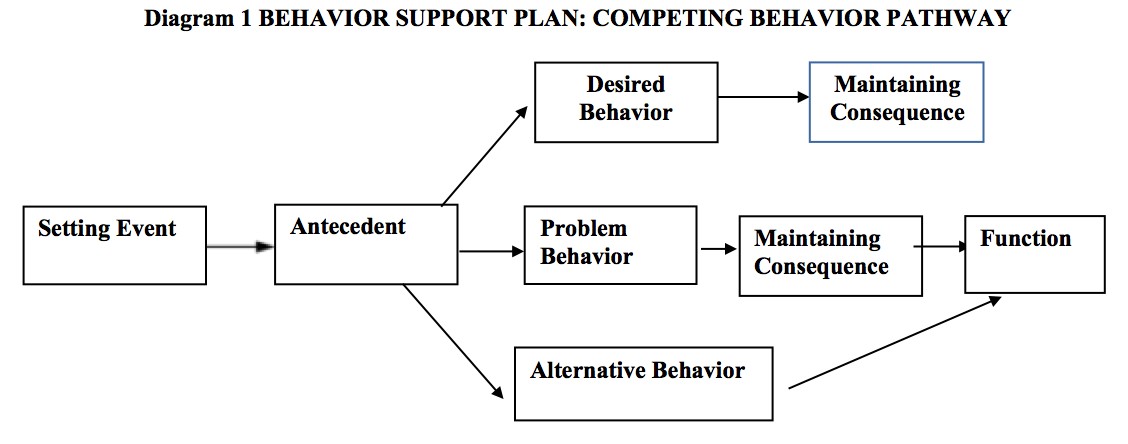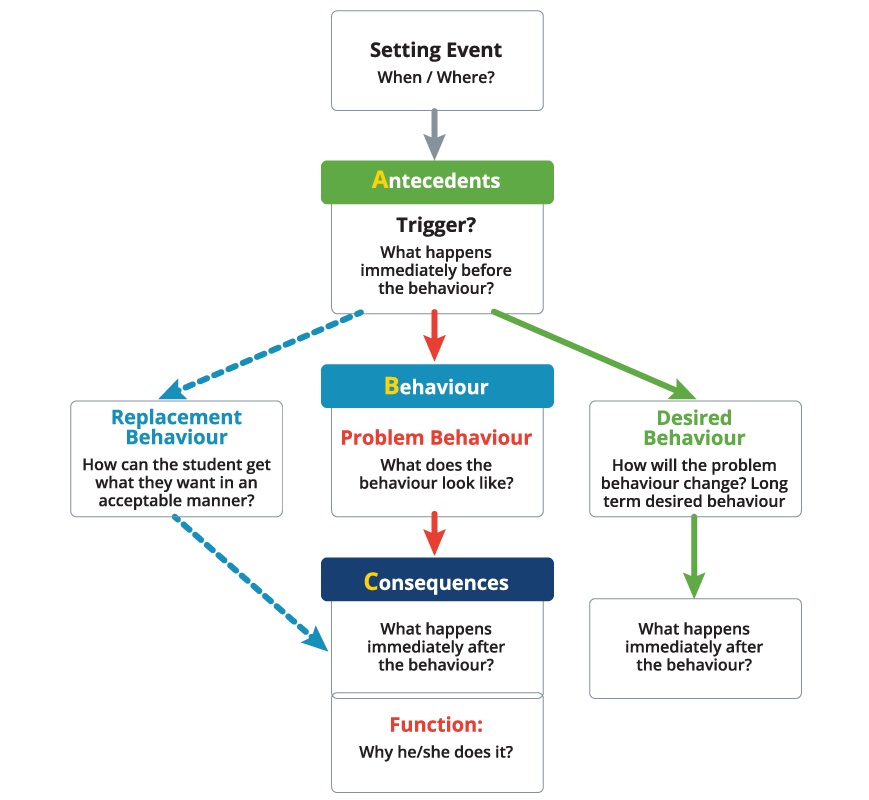
Problem behaviors can present significant challenges in various contexts, whether at home, school or in the workplace. These behaviors often serve as a form of communication or coping mechanism for individuals facing underlying difficulties. Adopting a positive approach to problem behaviors involves focusing on identifying and promoting replacement behaviors that can fulfill the same needs in a more constructive and socially acceptable manner. By shifting the emphasis from punishment and suppression to understanding and redirection, individuals can develop healthier ways of expressing themselves and engaging with their environment. Read on to explore the concept of replacement behavior and its role in fostering positive change.
Understanding Problem Behaviors

Problem behaviors can manifest in different forms, such as aggression, tantrums, self-injury, withdrawal, or defiance. It is crucial to recognize that these behaviors are often a response to unmet needs, communication difficulties, frustration, anxiety, or a lack of appropriate skills to navigate a particular situation. Punitive approaches that focus solely on stopping the problematic behavior fail to address the underlying causes, potentially exacerbating the issue in the long run.
The Role of Replacement Behavior
Replacement behavior involves identifying and teaching individuals alternative actions or strategies that serve the same purpose as the problem behavior but in a more desirable way. By doing so, the person can fulfill their needs effectively, enhance their well-being, and develop adaptive skills. This positive approach empowers individuals to make healthier choices and equips them with the tools to navigate challenging situations successfully.
Identifying Replacement Behaviors
To determine appropriate replacement behaviors, it is essential to understand the function or purpose the problem behavior serves. This requires careful observation and analysis of the individual's triggers, antecedents, and consequences. Once the underlying need is identified, suitable replacement behaviors can be selected.

For example, if a child engages in hitting to gain attention, the replacement behavior could involve teaching them to use appropriate communication skills, such as using words or gestures to express their needs. Alternatively, if an employee frequently interrupts others during meetings, a replacement behavior could involve teaching active listening skills and using respectful turn-taking.
Before jumping in to the topic, can we ask one question? Do you follow us on Social Media? We regularly share upgraded educational content, tips, feedback and more. Check us out by clicking the profiles here - Facebook / Twitter / LinkedIn / Pinterest / Instagram / YouTube
Teaching and Reinforcing Replacement Behaviors
Teaching replacement behaviors involves providing explicit instruction, modeling, practice, and reinforcement. Individuals may need support and guidance to acquire the necessary skills and strategies. The teaching process should be tailored to the individual's age, cognitive abilities, and learning style.
Positive reinforcement plays a vital role in promoting the adoption and maintenance of replacement behaviors. By providing praise, rewards, or recognition when individuals engage in the desired behaviors, we increase the likelihood of their repetition. Reinforcement can be both intrinsic (feeling a sense of accomplishment) and extrinsic (receiving tangible rewards or social praise).
Here are a few ways by which you can teach replacement behavior in a special education classroom:
Creating a supportive environment is crucial for the success of the replacement behavior approach. This involves fostering understanding, empathy, and patience while also modifying the physical and social environment to facilitate the adoption of new behaviors. Collaboration among caregivers, educators, therapists, and peers is vital to ensure consistency and reinforce the desired behaviors across different settings.
For replacement behaviors to become ingrained, it is essential to promote generalization and maintenance. Generalization refers to the transfer of newly learned behaviors across various situations, while maintenance involves the long-term sustainability of these behaviors. Consistency, practice, and ongoing support are crucial during this stage. Encouraging individuals to apply the replacement behaviors independently in real-life situations helps solidify their integration into their daily routines.
How Effective Is Replacement Behaviour?
Effective replacement behavior is often associated to have a similar consequence that provides the same function. For example, if you determine the cause is attention, you need to find appropriate measures to give the amount of attention the child needs. At the same time, you should also reinforce positive behavior that will be incompatible with the target behavior.
In simple terms, when a child fully engages with the replacement behavior, they do not have the time to engage in problem behavior at the same time. Thus, eventually, the behavior is ignored and is finally extinct. This technique is proven to be the most effective way to get rid of the problem behavior. However, it can sometimes be unsafe while supporting students' success. thus, while choosing a reinforcing behavior as a replacement behavior, you need t draw attention to the behavior you want the child to possess rather than the one you don't want.
Replacement Behaviour As The Ultimate Behaviour Support Plan
A positive approach to problem behaviors focuses on replacing undesirable actions with more functional and socially acceptable alternatives. As SEN teachers you must consider pursuing a B.Ed. in Special Education to understand the underlying needs and provide individuals with the tools to fulfill them constructively. This will promote personal growth, emotional well-being, and positive relationships. Through teaching, reinforcement, collaboration, and environmental modifications, replacement behavior strategies empower individuals to navigate challenging situations effectively and lead fulfilling lives.
Find the right course for you and try out the course. Call us at: 1800-212-6400. You can also mail us at act@asiancollegeofteachers.com
Get In Touch
UK – Registered OfficeAsian College Of Teachers Ltd (UK)
27, Old Gloucester Street, London – WC1N 3AX, UK
UK Toll Free: 0-808-189-1203
www.asiancollegeofteachers.co.uk
All SEN Courses are designed, developed and created by Asian College of Teachers Ltd, United Kingdom. These courses are certified by CPD Certification Service UK and endorsed by NCC Education, UK, and Short Courses from CACHE, UK through Laser Learning UK.
Asian College of Teachers (ACT) undertakes a continuous review of its teacher training courses to ensure imparting high quality education. However, there might be circumstances outside of ACT’s control which might affect its stakeholders like if you are planning to teach in a different country, applying for a teaching license, pursuing higher studies or trying to get the certificate approved by the Ministry of Education (MoE) of a particular country then you can do so with the certificate issued by Asian College of Teachers (ACT). However, each country’s Ministry of Education (MoE) or educational bodies set certain standards that are indispensable for the pursuit of higher studies or teaching in schools in that country. So it can be a possibility that you may be able to use the certificate for higher studies or teaching purposes in one country and not in another. Therefore, we strongly recommend that you investigate thoroughly and check with the relevant authorities regarding the acceptance of the certificate issued by us before you enrol on a particular course. ACT strives to offer high-quality education and its certificates can be valuable for various purposes internationally, but still it is crucial for individuals to verify the specific recognition of the certificate in the country they intend to use it, especially for formal education or professional licensing purposes. This approach ensures that the stakeholders make informed decisions regarding their educational and career paths.
© 2025 Asian College of Teachers. All Rights Reserved. Asian College Of Teachers is a trading brand of TTA Training Pvt. Ltd (India) - CIN U80902WB2016PTC215839, Asia Teachers Training Co., Ltd (Thailand) - Registration No. 0105558193360, Asian College Of Teachers Ltd (UK) - Company Number 9939942 & Asian College Of Teachers LLC, (USA) - Federal Tax Identification Number 30-1261596
Designed by kreativewebtech